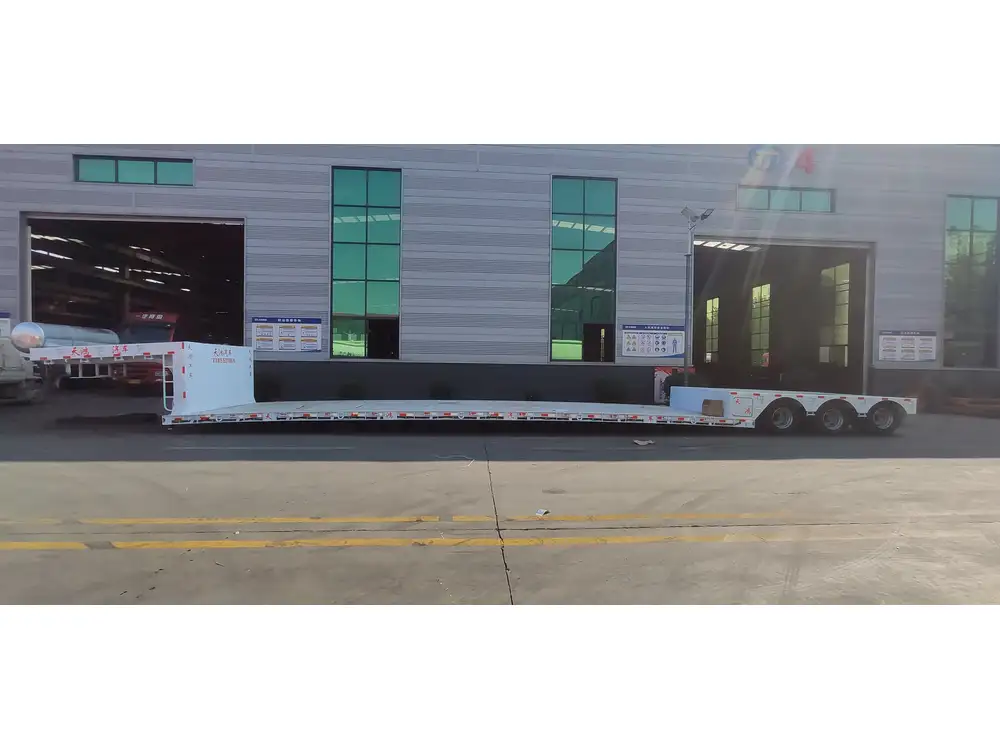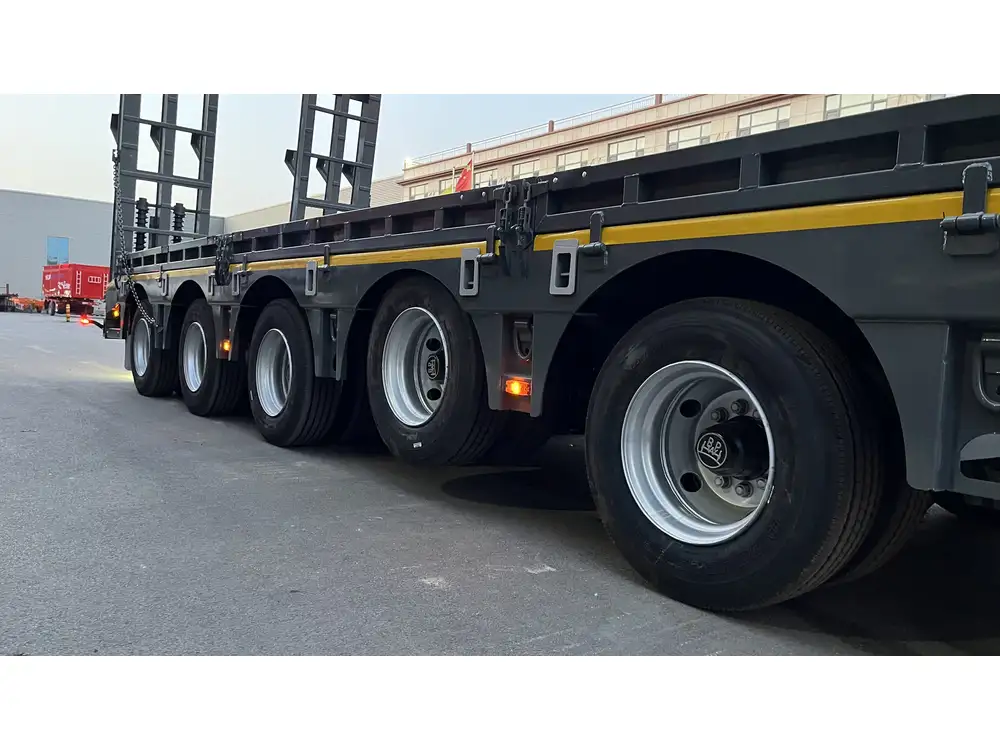Cutting the roof off a semi-trailer is a specialized process that requires careful planning, technical skill, and appropriate tools. Whether you’re modifying a trailer for a new purpose, replacing a damaged roof, or performing maintenance, it’s vital to follow a systematic approach. In this detailed guide, we will explore the steps involved, necessary equipment, safety precautions, and best practices to ensure a successful project.
Understanding the Structure of a Semi-Trailer Roof
Types of Semi-Trailer Roofs
Before initiating the cutting process, familiarize yourself with the various types of roofs typically found on semi-trailers:
- Flat Roofs: These roofs are uniform and easy to work with. Cutting a flat roof often requires straightforward techniques but still necessitates precision.
- Sloped Roofs: Semi-trailers with a sloped roof may present more challenges in terms of cutting due to their angles and structural support.
- Curved Roofs: These roofs require advanced cutting techniques and often involve more sophisticated tools for proper removal.

Structural Components
The roof of a semi-trailer is not merely a flat sheet; it includes crucial structural elements. Understanding these components helps in determining how to safely remove the roof:
- Rafters and Crossmembers: Support structures that provide stability to the roof.
- Skin Material: The outer layer of the roof, typically made from steel or aluminum.
- Insulation: Often found beneath the roof skin, insulation provides thermal regulation.
Preparation Phase: Tools and Materials Needed
To effectively cut the roof off a semi-trailer, you will need the following tools and materials:
| Tool/Material | Purpose |
|---|---|
| Angle Grinder | Ideal for cutting through metal skin and crossmembers. |
| Reciprocating Saw | Useful for detailed cuts, especially around structural components. |
| Plasma Cutter | Provides clean cuts in thicker metal, minimizing debris. |
| Safety Goggles | Protects eyes from metal particles and sparks. |
| Hearing Protection | Essential to safeguard from the noise of power tools. |
| Work Gloves | Protects hands during handling sharp materials. |
| Measuring Tape | Ensures accurate measurements for cuts. |
| Marker or Chalk | Useful for marking cut lines on the roof material. |
| Steel Toe Boots | Offers foot protection and supports safety standards. |
| Ladder | Required for gaining access to the trailer roof. |
Ensuring Safety: Precautionary Measures
Before commencing with any cutting work, it is crucial to implement safety measures to minimize risks:
- Personal Protective Equipment (PPE): Always wear appropriate PPE, including gloves, goggles, hearing protection, and steel-toed boots.
- Fire Safety: Keep a fire extinguisher nearby, particularly if working with tools that produce sparks.
- Area Clearance: Ensure that the work area is clear of unnecessary tools and personnel to avoid accidents.
- Electrical Safety: Disconnect any electrical components attached to the trailer’s roof to prevent shocks.

Step-by-Step Guide: Cutting the Roof Off a Semi-Trailer
Step 1: Assess the Trailer
Begin by examining the trailer to identify the specific section of the roof you wish to cut. Consider any existing structural damage or areas that may be more challenging to work with.
Step 2: Measure and Mark
Using a measuring tape, measure the exact area to be cut and clearly mark it with a marker or chalk. Double-check your measurements to avoid costly mistakes.

Step 3: Prepare the Work Area
Set up your tools and ensure that they are all in working order. Position your ladder securely for safe access to the roof.
Step 4: Cut the Perimeter
- Start your cut at a corner of the marked area using an angle grinder or plasma cutter.
- Make slow, steady movements to control the tool and minimize unnecessary vibrations.
- Cut along the marked line to create a defined perimeter for the roof section you are removing.
Step 5: Reinforce Structural Integrity
If the roof contributes significantly to the trailer’s structural integrity, consider placing temporary supports before fully removing the roof section. This will help maintain the trailer’s shape and prevent distortion.

Step 6: Remove Crossmembers
As you cut through the crossmembers, use a reciprocating saw for precision. Take care not to destabilize the trailer; make cuts gradually and ensure that structural supports remain intact until you are ready to remove them.
Step 7: Complete the Cut
Once you have cut around the perimeter and any required crossmembers, slowly lift the cut roof section from the trailer. Having assistance can simplify this task, reducing the risk of injury or equipment damage.
Post-Cutting Procedures: Inspection and Cleanup

Inspecting the Area
After the roof has been removed, inspect the trailer for:
- Damage Assessment: Identify any necessary repairs to rafters or other structural components.
- Surface Preparation: Ensure the edges of the remaining structure are smooth and free from debris.
Cleanup
Following the project, clean your work area to remove metal shavings and other debris. Safely dispose of any cut roof material according to local regulations.
Frequently Asked Questions (FAQs)

Q1: Can I remove the roof by myself?
While it’s possible, it’s advisable to have at least one additional person to assist, especially for larger trailers. This ensures safety and allows for better control during the removal process.
Q2: What if the roof has insulation material?
If insulation is present, be cautious when cutting to avoid inhaling any particles and address waste disposal requirements, as some materials may be hazardous.
Q3: How do I know if I’ve compromised the structural integrity of the trailer?
Consult a structural engineer if you’re uncertain about the impacts of removing the roof on your trailer’s structural integrity.

Q4: What tools are best for cutting thin vs. thick metal roofs?
- For thin metal roofs, an angle grinder or reciprocating saw is usually sufficient.
- For thicker metal, a plasma cutter may be required for optimal results.
Q5: Is it necessary to repaint after cutting?
Yes, it is recommended to repaint exposed areas after cutting to prevent rust and corrosion. Use appropriate metal primer and paint for durability.
Conclusion
Cutting the roof off a semi-trailer can be a daunting task, but with the right knowledge, tools, and precautions, it can be performed efficiently and safely. Following the structured steps outlined above not only enhances your understanding of the process but also ensures that results meet your expectations. By dealing with the intricate details involved in this project, we foster a professional approach that paves the way for successful modifications or repairs of your semi-trailer.
Whether you’re an experienced manufacturer or a DIY enthusiast, honing skills related to trailer modifications can open doors to diverse opportunities. From creating functional spare parts to innovating creative designs, the possibilities are vast. Maintain a focus on safety, invest in quality tools, and prioritize thorough preparation to achieve the best outcomes in your semi-trailer projects.



